This article previously appeared in the Fall 2017 Long Trail News.
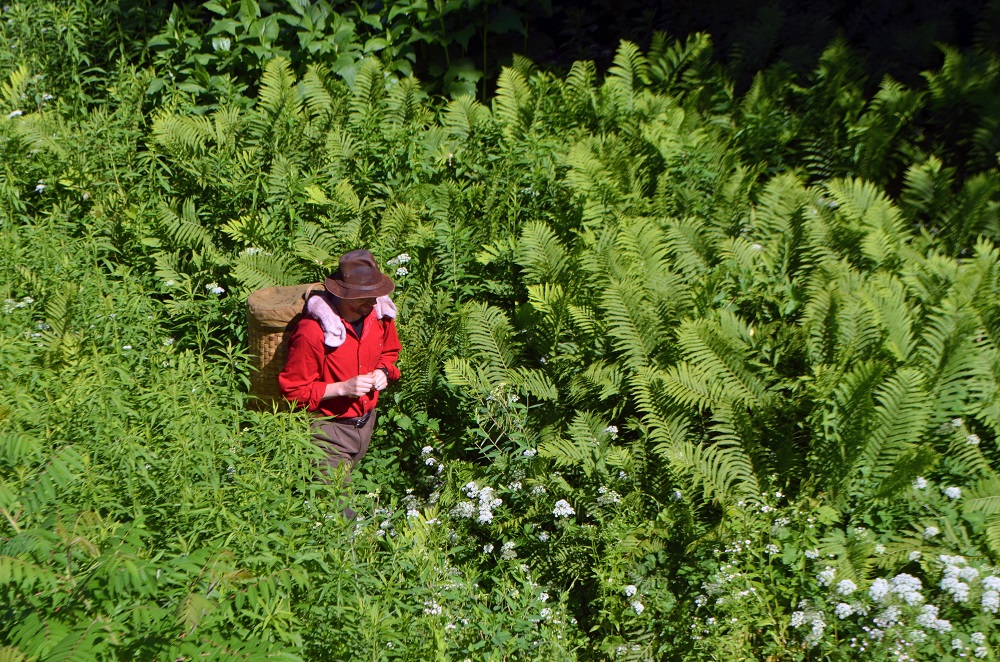
A 1917 Inspired End-to End Long Trail Hike
Okay, admit it. At some point, you’ve wondered what it was like to hike the Long Trail back in the early days. You know, wearing wool knickers, carrying a pack basket, and drinking water straight from streams. Maybe the date on a historic shelter triggered your thought. Or a hand-colored glass slide of cheery hikers in wool clothing, or curiosity about what backpackers did before Therm-a-Rests.
I’ll admit it. I’ve thought about it a lot. For me, the trigger was the Long Trail Guide.
As a kid growing up in Vermont I was fascinated by the idea of carrying everything you need on your back and walking someplace new every day. I can remember poring over the 1971 guidebook, imagining what it would be like to hike the whole trail. When I finally got my chance in 1996, the experience was better than I had imagined.
My passion for the Long Trail grew to include a hobby of collecting old Long Trail guidebooks. What I love about the old ones are the hand-drawn pull-out maps, vivid trail descriptions, and gear and food recommendations, like these from the 1917 and 1920 guides:
For food, bread and bacon will keep you going with little weight.
The camp equipage carried is a matter of personal experience and desire, but a good rule is to wear woolen underwear. . .
A tent is not necessary on most of the trail; it may be needed in the southerly part if the hiker desires to sleep out, in which case a very light, small tent of balloon silk is advised.
No person should ever travel the Long Trail without axe, compass, and matches.
The idea to do a retro hike began to form in earnest as the club started to plan the one-hundredth anniversary (twenty-eighth) edition of the Long Trail Guide. I read the 1917 edition to learn how to best reenact the early trail experience. Since the trail ended at Johnson in 1917, I figured if I hustled, I could make the 230 miles from the Massachusetts line in the two weeks I had off from work.
I considered key factors that would make my modern-day hike as similar to a 1917 hike as possible, and decided I would follow the 1917 and 1920 guidebooks’ advice on gear, clothing, and food.
A photo that hangs in the GMC Visitor Center of a hiker in period clothing carrying a pack basket inspired me to carry one too. While researching where to buy one, I learned how they were made, and decided I could make my own.
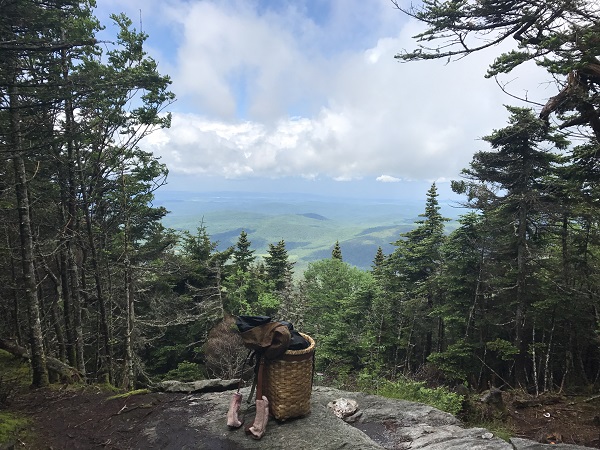
Two things are needed to make an authentic pack basket: a brown ash log and a good hammer. Brown ash is unique in that the wood separates into strips (or splints) at the annual growth rings when pounded. A forester friend told me that a logger up north had cut some brown ash, and suggested I might be able to buy one of the logs.
You want to make sure you find a good “pounder”—one with thick enough growth rings to provide strong splints, but not so thick that they are too hard to pound out. I bought a good one, and it still took me all summer to pound out enough splints. I had to shave and cut each strip to size, depending upon whether it was a vertical support or a weaver. I rolled the splints together for storage, and then soaked them in water to soften before I began weaving. I wove the basket over the winter of 2016, and took it out on its first trial hike that spring.
I made the bottom runners from old Long Trail Patrol tool handles, fashioned a canvas lid to keep the rain out, and equipped the basket with leather straps. The 1920 Long Trail Guide recommends leather straps over canvas ones because canvas tends to curl and cut into your shoulders. For the record, leather straps curl and cut into your shoulders, too, but not as badly as canvas straps.
Day 1. It’s about 12:00 p.m. and I just finished climbing up Pine Cobble. I am not even on the Long Trail yet. Heck, I am not even out of Massachusetts and I’m soaked clean through my wool clothing and leather hat. I took off my wool shirt and wrapped it around the pack straps for some extra padding.
The 1920 guidebook recommends a tent or tarp made from balloon silk. The best I could make out is that balloon silk is not really silk, but waterproof cotton, similar to a high thread count cotton sheet. I got a sheet from a thrift store and looked to the internet to figure out how to waterproof it. I found one recipe for a linseed oil coating that looked promising. After several attempts, I couldn’t get the sheet to shed water properly, so I modified the recipe by adding silicone. That seemed to help. It wasn’t period correct, but it worked better than linseed oil. Silicone also won’t spontaneously combust in your pack (as folded cloth soaked in linseed oil is apt to do). Was the tarp waterproof? No. But it would shed water.
Day 3. Heading to the Winhall River for the night. About a mile past Stratton Pond, I got caught in a summer thunderstorm. I put on my poncho and hunkered down on top of my basket like a mother hen over an egg trying to keep it dry. The rain left the trail and campsite filled with water. I decided to push on to William Douglas Shelter and was thankful for a roof over my head and a place to dry out my gear.
One of my biggest concerns was having to sleep directly on the ground. In the old days, lodges had bunks covered with bough beds cut from conifer trees, but cutting vegetation today would not be very Leave No Trace friendly. The 1920 guidebook recommends carrying a pillowcase and filling it with leaves for added comfort. It was probably user error, but I was never able to get a bed of leaves to be “comfortable.” Sleeping became a moving target. On the plus side, I got early morning starts (birds begin to sing at 4:17 a.m. in mid-June, and it’s light enough to see the trail a little after 5:00).
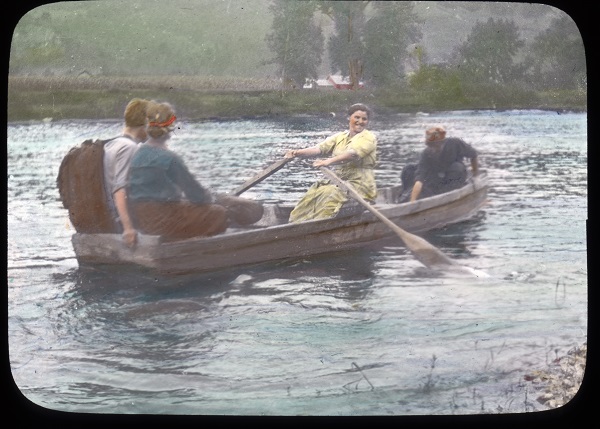
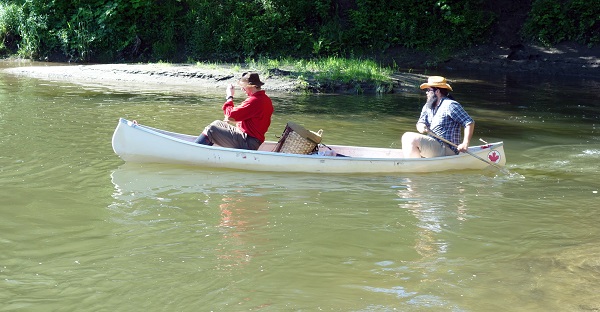
My food was not much different than what folks carry today: cheese, trail mix, meat, bread. The biggest difference was the packaging. I carried food in waterproof cloth bags, packed blocks of wax-coated cheddar cheese, and repackaged all other food using wax paper, paper bags, or foil. I carried cans of salmon and anchovies, and tried to eat all canned foods during the first day of a resupply. I generated very little waste, and packed out all my trash in paper bags (after a couple of days on the trail, empty fish cans would stink to high heaven, and I wished I had a plastic bag). I was lucky to have great support, and could arrange food resupplies at road crossings. In 1917 hikers walked to local farms listed in the guidebook, and for small sums could get hot meals, a bed for the night, and staples such as meat, bread, and eggs.
Day 6. It’s pouring rain and I’m stopped at Governor Clement Shelter for breakfast. Anchovies, bread, and cheese with a chaser of nuts and chocolate. I like soaking up the leftover salty olive oil at the bottom of the anchovy can with bread. I know that I’m lingering too long over breakfast delaying the wet climb up Killington.
Since the pack basket had limited volume and heavy loads were uncomfortable, I decided to carry less food and use more frequent food drops. Despite my best efforts, I found it difficult to carry and eat enough food for the necessary calories. Lack of a big cooked meal at night was the biggest difference, and if I were to do it again, I would build in more time to prepare proper evening meals. In 1917 most shelters were equipped with cookware, and meals were prepared on wood stoves or open fires. Because shelters no longer have wood stoves and wood fires are not permitted at many overnight sites today, I carried an Esbit alcohol stove. The stove was good at boiling water, but it was not as successful at slow-cooking foods like rice and oats. So I gave up my alcohol stove early on, and relied mostly on dry food.
Day 9. Massive rainstorm tonight. At Skyline Lodge and very happy to be out of the rain. Sleeping on the bare wood of the shelter, but I don’t mind. The first time I visited Skyline was in the winter of 1988 during high school. I remember hiking up the Skylight Pond Trail in running shoes wearing the equivalent of plastic bread bags over my socks. No, it is not lost on me that my gear has actually regressed from what I used on that hike so many years ago.
Much of the trail has changed since 1917, especially down south, but north of Route 4 it largely follows the original footpath. I chose to depart from the current Long Trail to follow the original route in two places: the Sherburne Pass Trail from Pico to today’s Maine Junction north of Route 4; and a special pre-arranged ferry crossing of the Winooski River in Bolton. I gladly paid the twenty-five-cent fare, just as in 1917. Unfortunately, only a couple of the lodges that sheltered hikers in the early days remain: the Lake Mansfield Trout Club in Nebraska Valley, and Barnes Camp at the base of Smugglers’ Notch. Both were popular stops along the trail.
The privately owned Lake Mansfield Trout Club is still in business, but no longer hosts hikers. In support of my hike, however, the Trout Club managers generously offered me room and board.
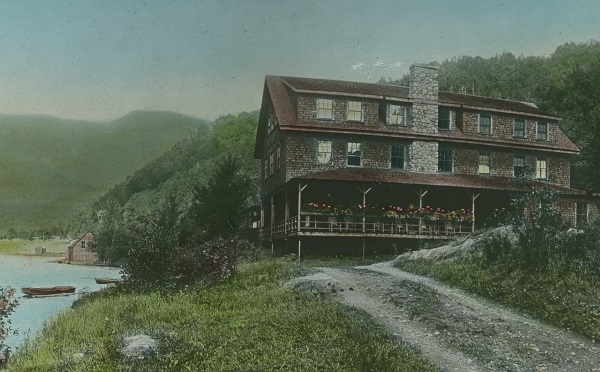
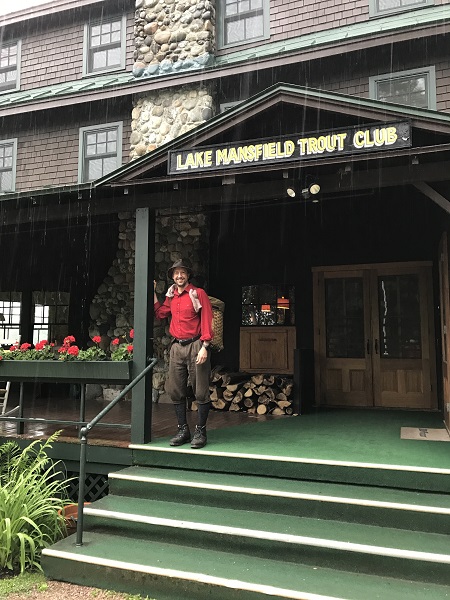
Day 12. After a ferry ride across the Winooski River and a hike up over Bolton Mountain, I made it to the Trout Club by 4:15 and checked in to my room. Dinner is served at 6:00 and I had enough time to get cleaned up and make my hiking clothes presentable. There is some benefit to hiking in pleated knickers and a button-down collar shirt. The highlight was a dinner of rack of lamb, mixed vegetables, baked potatoes, and a fruit cobbler desert. Seconds? Yes please, I’ll have seconds.
It was an interesting contrast to hike with gear you can pick up at a thrift store or make in the backyard. I concluded that, yes, you absolutely can hike using vintage or homemade gear. But you don’t have to. Modern gear and clothing are amazing and make hiking so much more safe and enjoyable.
While the trail has changed over the past hundred years, I like to think that the trail experience hasn’t all that much. I was filthy, and didn’t care. I marveled at how good the water tasted. I looked forward to a breakfast of anchovies, cheese, and nuts (because everything tastes good on the trail). I got up with the birds, hiked as far as my feet would take me, and went to bed when the sun set. And each day, I was struck by the inexplicable beauty of my surroundings.
I don’t begin to claim I had a pure 1917 hiking experience, or could hold a candle to those early pioneers, but hope that by understanding what the trail was like for those that had the will to build it, I will be better equipped to help care for and protect it.
—Mike DeBonis (AKA “Satchmo”), Executive Director
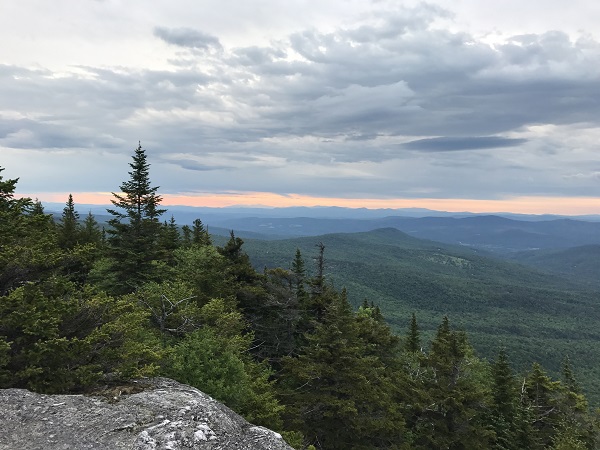
Check out Part II for an in-depth look at the gear used on Mike’s retro hike.



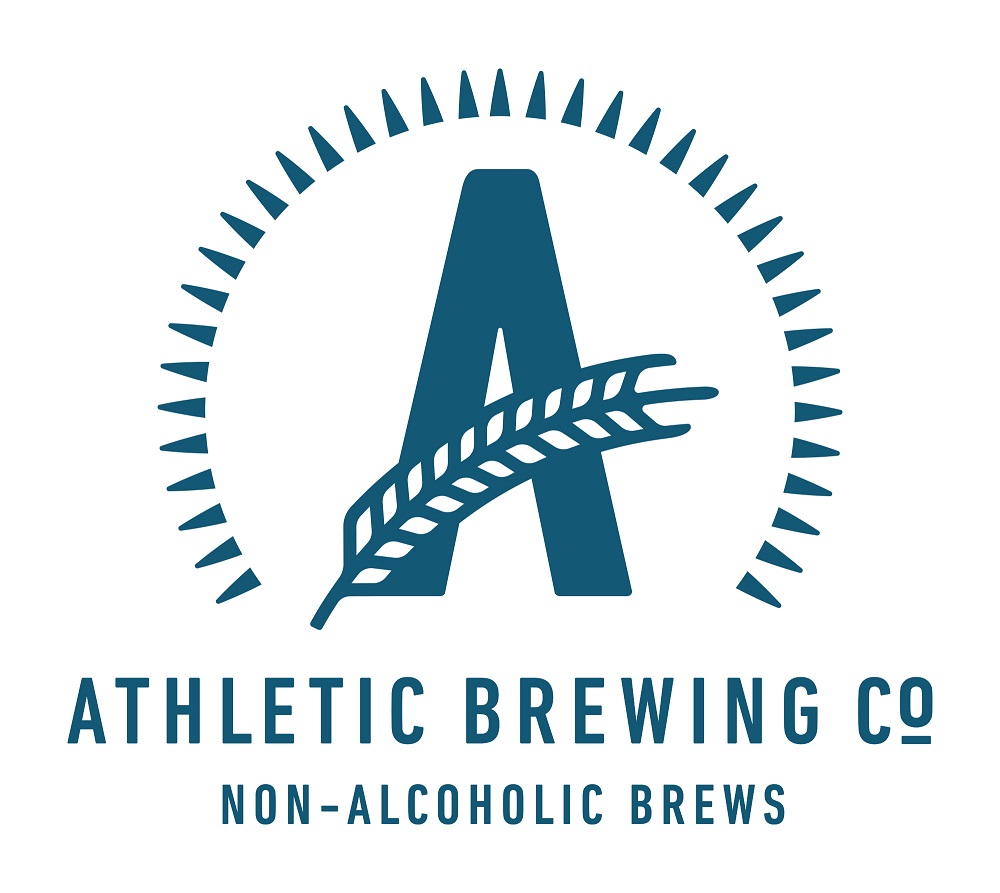















Fun article! What did you carry for sleeping? A wool blanket? And how much did your park weigh?
Mike never weighed his pack but his full gear list will be posted this Thursday.